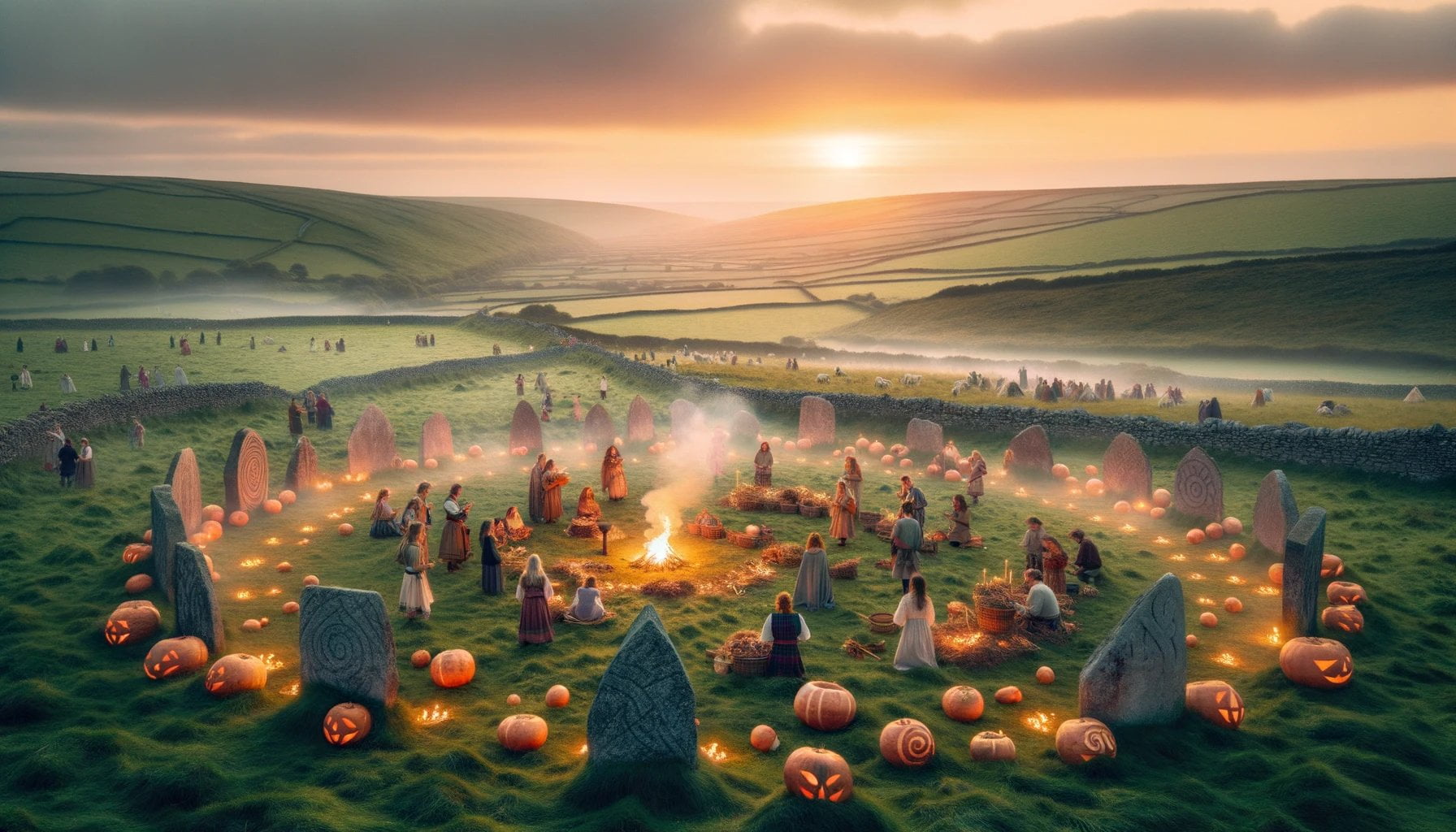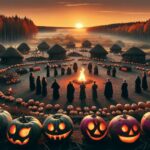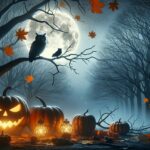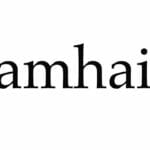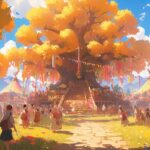Discovering the deep roots of Halloween and unmasking its true origins is an endeavor that takes us back to the ancient Celtic festival known as Samhain. As we peel back layers of history, we will delve into the earliest traces of this mystical celebration and explore the captivating history of trick-or-treating. Prepare to embark on a journey through time as we unveil the Celtic festival and uncover the fascinating origins of Halloween.
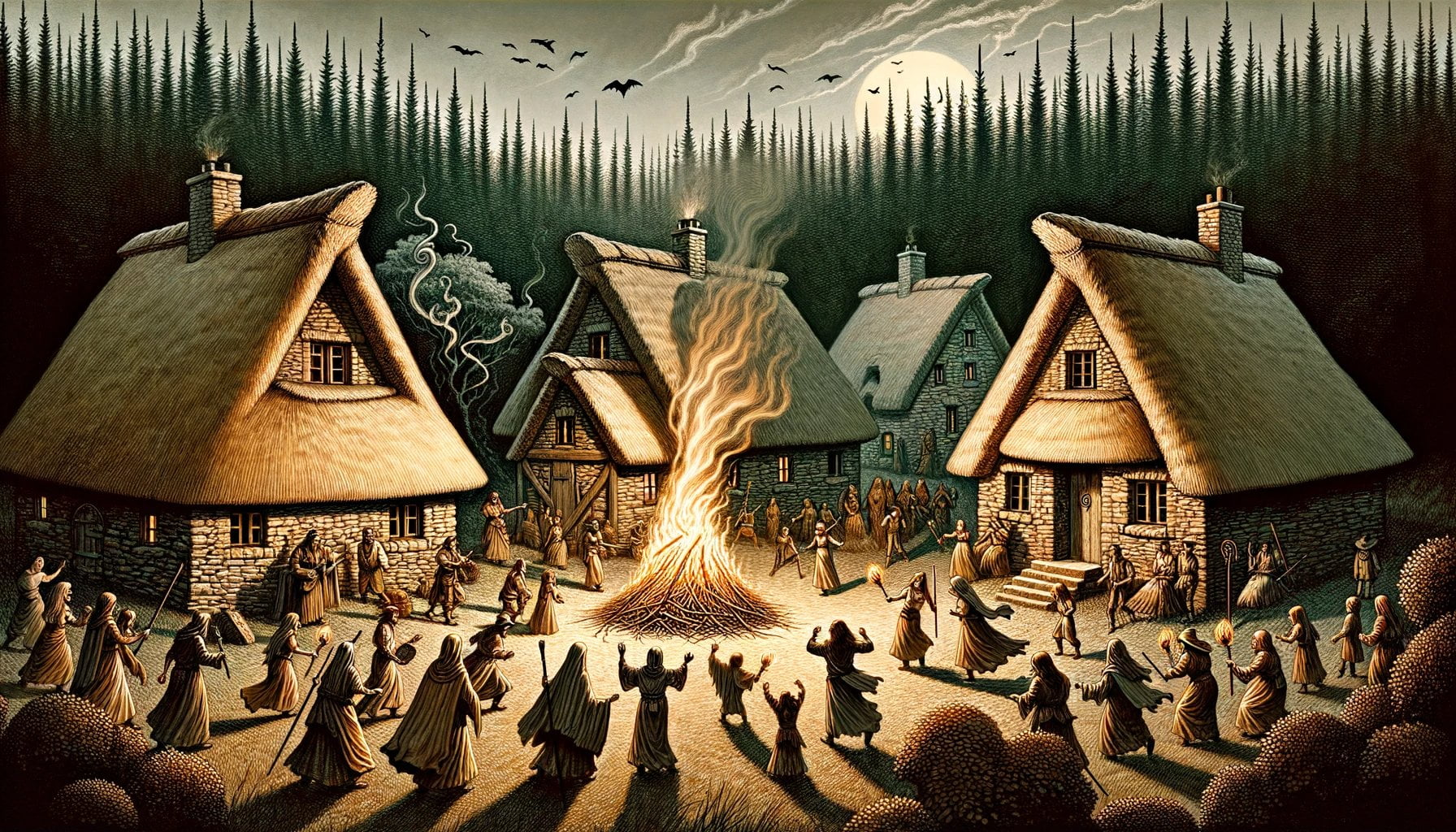
Key Takeaways:
- Halloween traces its origins back 2,000 years to the ancient Celtic festival of Samhain, which marked the end of the harvest season and the beginning of the dark half of the year.
- During Samhain, the Celts believed in the thinning of the barrier between the physical and spiritual worlds, leading them to prepare offerings and light bonfires to ward off malevolent spirits.
- Over time, Samhain merged with Christian holidays like All Saints’ Day and All Souls’ Day, resulting in the evolution of the festival into modern-day Halloween.
- Many of the Halloween traditions we practice today, including dressing up in costumes, trick-or-treating, and carving pumpkins, have their roots in the ancient Samhain festival.
- Despite its ancient origins, Halloween has taken on a contemporary character with various activities like parties, parades, haunted houses, and watching horror-themed movies, influenced by popular culture.
By understanding the historical connection between Halloween and Samhain, we gain a deeper appreciation for the rich traditions and customs that have been passed down through generations.
Halloween’s Origins in Samhain: Tracing the Ancient Celtic Festival
Halloween, one of the most widely celebrated holidays, has its origins deeply rooted in the ancient Celtic festival of Samhain. So, what makes Samhain the ancient Celtic festival considered the origin of Halloween?
The Origins of Samhain
Let’s travel back over 2,000 years to the time when the Celts inhabited what is now Ireland, the United Kingdom, and northern France. Samhain, pronounced sow-in, held immense significance for the Celts as it marked the end of the harvest season and the beginning of the dark half of the year.
Samhain Rituals and Traditions
During the festival of Samhain, the Celts believed that the barrier between the physical and spiritual worlds was thin, allowing spirits to cross over. To honor and appease these spirits, the Celts prepared offerings and left them outside their homes. They also lit bonfires to both ward off malevolent spirits and provide warmth during the looming cold season.
The Evolution of Samhain into Halloween
Over time, Samhain gradually transformed into the Halloween we know and celebrate today. Christian holidays, such as All Saints’ Day and All Souls’ Day, began to meld with the Celtic customs of Samhain. This fusion resulted in the creation of Halloween traditions like dressing up in costumes and going door-to-door for treats—activities that have become synonymous with the holiday.
Halloween Traditions and Customs
Many of the Halloween traditions we practice today find their origins in the ancient Samhain festival. Dressing up in costumes, engaging in the playful act of trick-or-treating, and even carving pumpkins can all be traced back to the customs and beliefs of the Celts during Samhain.
Samhain in Modern Culture
Although rooted in ancient history, Halloween has transcended time and borders to become a globally celebrated event. It has evolved into a holiday that incorporates various activities, such as parties, parades, haunted houses, and watching horror-themed movies. With the influence of popular culture, the imagery and customs associated with Halloween have taken on a distinctly modern character.
By unraveling the historical roots of Halloween in the ancient Celtic festival of Samhain, we gain a greater appreciation for the traditions and customs that have been passed down through generations. From the belief in spirits crossing over to the evolution of the holiday into a global celebration, the link between Halloween and Samhain offers a captivating and rich history to explore.
Sources:
- History.com: Halloween 2023: Origins, Meaning & Traditions
- History.co.uk: Samhain and the Pagan Roots of Halloween
Some fascinating information about the ancient origin of Halloween can be found when exploring the history of this beloved holiday. Did you know that Halloween first came to America from Ireland? Discover more about when Halloween first came to America and how it evolved over the years by clicking here.
Have you ever wondered why owls are often associated with Halloween? Their mysterious and nocturnal nature adds to the allure of this spooky season. Unravel the intriguing connection between owls and Halloween by clicking here.
Delve into the ancient Celtic festival that is considered the origin of Halloween and uncover its captivating traditions and rituals. Learn about the rich historical significance of this festival by clicking here.
[Earliest Trace]
The ancient roots of Halloween can be traced back to the Celtic festival of Samhain, which was celebrated over 2,000 years ago by the Celts in Ireland, the United Kingdom, and northern France. Samhain marked the end of the harvest season and the beginning of winter, symbolizing the transition from light to darkness. As we delve into the intriguing origins of Halloween, let’s uncover the earliest traces of this ancient Celtic festival.
Samhain: A Gateway between Worlds
Samhain was a pivotal time for the Celts, taking place between the fall equinox and the winter solstice. This festival held great significance as it was believed that during Samhain, the barrier between the physical and spirit worlds became thin, allowing spirits and fairies to roam freely among the living. [Earliest Trace] The Celts feared the presence of malevolent spirits, so bonfires were lit to provide warmth and ward off any ill-intentioned entities.
Offerings and Harvest Gatherings
During Samhain, the Celts offered various offerings to honor and appease the spirits. Outside their homes and in the fields, they left food and gifts for fairies, known as Sidhs, in exchange for protection and abundance. These offerings were seen as a way to maintain harmony between the human and spirit realms. [Earliest Trace] Additionally, Samhain was a time for harvest gatherings, where the bounty of the land was celebrated and shared among the community.
Evolution into Modern Halloween
The ancient festival of Samhain gradually evolved over time, blending with Christian customs and transforming into the Halloween we know today. The fusion of traditions brought by Christianity, such as All Saints’ Day and All Souls’ Day, merged with the Celtic beliefs and customs of Samhain. This amalgamation created a new holiday, where the ancient Celtic festival provided the foundation for what is now celebrated as Halloween.
Key Takeaways:
- The origins of Halloween can be traced back to the ancient Celtic festival of Samhain.
- Samhain marked the end of the harvest season and the beginning of the dark half of the year for the Celts.
- The Celts believed that during Samhain, the barrier between the physical and spiritual worlds was thin, allowing spirits to cross over.
- Offerings were prepared and left outside homes to honor and appease the spirits, and bonfires were lit to ward off malevolent spirits and provide warmth.
- Halloween gradually emerged through the fusion of Celtic customs and Christian holidays.
- The historical connection between Halloween and Samhain offers a captivating and rich history to explore.
Sources:
- Halloween 2023: Origins, Meaning & Traditions | HISTORY
- Samhain – Celtic Origins, Rituals & Halloween | HISTORY
History of Trick-or-Treating
As we delve into the history of Halloween, it’s intriguing to uncover the origins of one of its most beloved and cherished traditions – trick-or-treating. So, let’s embark on a journey to explore the rich roots of this delightful practice and unravel the ancient Celtic festival that gave birth to the modern-day Halloween festivities.
The Ancient Celtic Festival: Samhain
Ancient Celts celebrated their festival of Samhain on October 31, marking the end of the harvest season and the beginning of the dark half of the year. This sacred festival held great significance for the Celts, as they believed that during Samhain, the boundary between the physical and spiritual worlds became thin. It was believed that spirits of the deceased could cross over and walk alongside the living.
Offerings to Appease the Spirits
During Samhain, the Celts would prepare offerings and place them outside their homes to honor and appease the spiritual beings. These offerings were intended to ensure goodwill and protection in the coming year. By making these gestures, they sought to establish harmony between the living and the spirit world.
The Evolution of Trick-or-Treating
The practice of trick-or-treating finds its origins in the customs of Samhain. As part of their offerings, the Celts would sometimes disguise themselves in costumes, hoping to blend in with the spirits roaming the earthly realm. This tradition of disguising oneself slowly transformed into the costumes we see today.
Additionally, the Celts would go from house to house, collecting food and other offerings. This act of generosity from the community mirrored the notion of sharing and helping each other during the transition from the bountiful harvest season to the challenging winter months.
The Fusion of Tradition
Over time, Samhain merged with Christian holidays, such as All Saints’ Day and All Souls’ Day, resulting in the Halloween we know today. The Christian influence brought the concept of honoring saints and deceased loved ones, further intertwining spiritual beliefs with the ancient Celtic customs.
Key Takeaways:
- The ancient Celtic festival of Samhain serves as the foundation for Halloween traditions.
- Samhain, celebrated on October 31, marked the end of the harvest season and the beginning of the dark half of the year.
- During Samhain, the Celts believed that the barrier between the physical and spiritual worlds was thin, allowing spirits to cross over to Earth.
- Offerings were prepared and left outside homes to honor and appease the spirits, while bonfires were lit to ward off malevolent entities.
- The tradition of trick-or-treating can be traced back to the offerings and community sharing during Samhain.
- Samhain gradually merged with Christian customs, resulting in the Halloween we celebrate today.
Sources:
– History.com: How Trick-or-Treating Became a Halloween Tradition
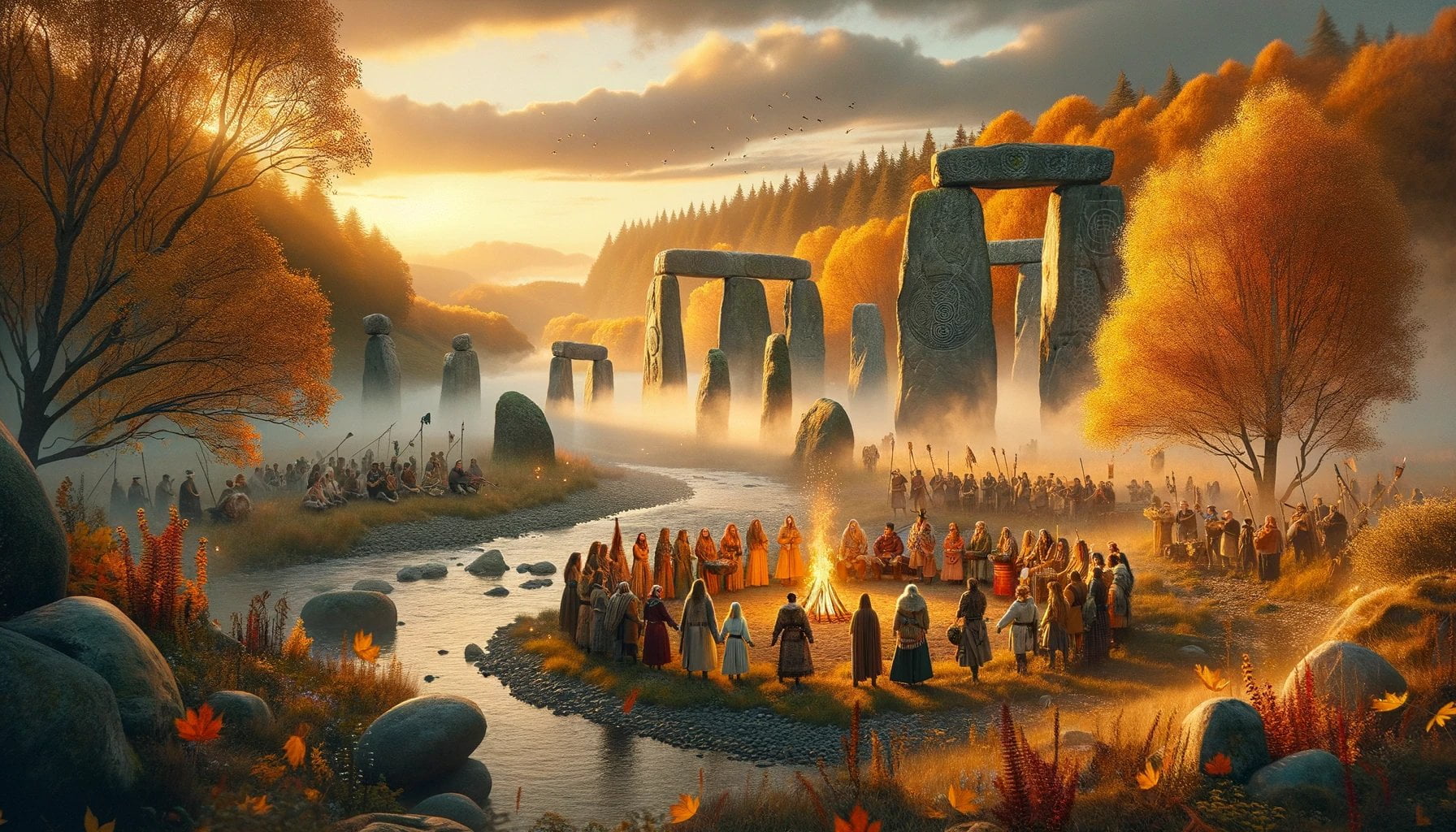
FAQ
Q1: What is the ancient Celtic festival of Samhain?
A1: Samhain is an ancient Celtic festival that marked the end of the harvest season and the beginning of the darker half of the year. It was a significant event celebrated primarily in Ireland, Scotland, and the Isle of Man.
Q2: What were the rituals and traditions associated with Samhain?
A2: During Samhain, the Celts believed that the barrier between the physical and spiritual worlds was thin, allowing spirits to cross over. They would prepare offerings and leave them outside their homes, and bonfires were lit to ward off malevolent spirits.
Q3: How did Samhain evolve into modern Halloween?
A3: Over time, Samhain merged with Christian holidays like All Saints’ Day and All Souls’ Day, leading to the evolution of the festival into the modern-day Halloween. This fusion gave rise to traditions such as dressing up in costumes and trick-or-treating.
Q4: What are some of the Halloween traditions and customs that have their origins in Samhain?
A4: Many of the Halloween traditions practiced today, such as dressing up in costumes, going door-to-door for treats, and carving pumpkins, can be traced back to the ancient Celtic festival of Samhain.
Q5: How has Halloween changed in modern culture?
A5: Despite its ancient origins, Halloween has evolved into a worldwide celebration with various activities like parties, parades, haunted houses, and watching horror-themed movies. Popular culture has heavily influenced the modern character of Halloween, shaping its imagery and customs.
- China II Review: Delicious Food & Speedy Service - April 17, 2025
- Understand Virginia’s Flag: History & Debate - April 17, 2025
- Explore Long Island’s Map: Unique Regions & Insights - April 17, 2025
